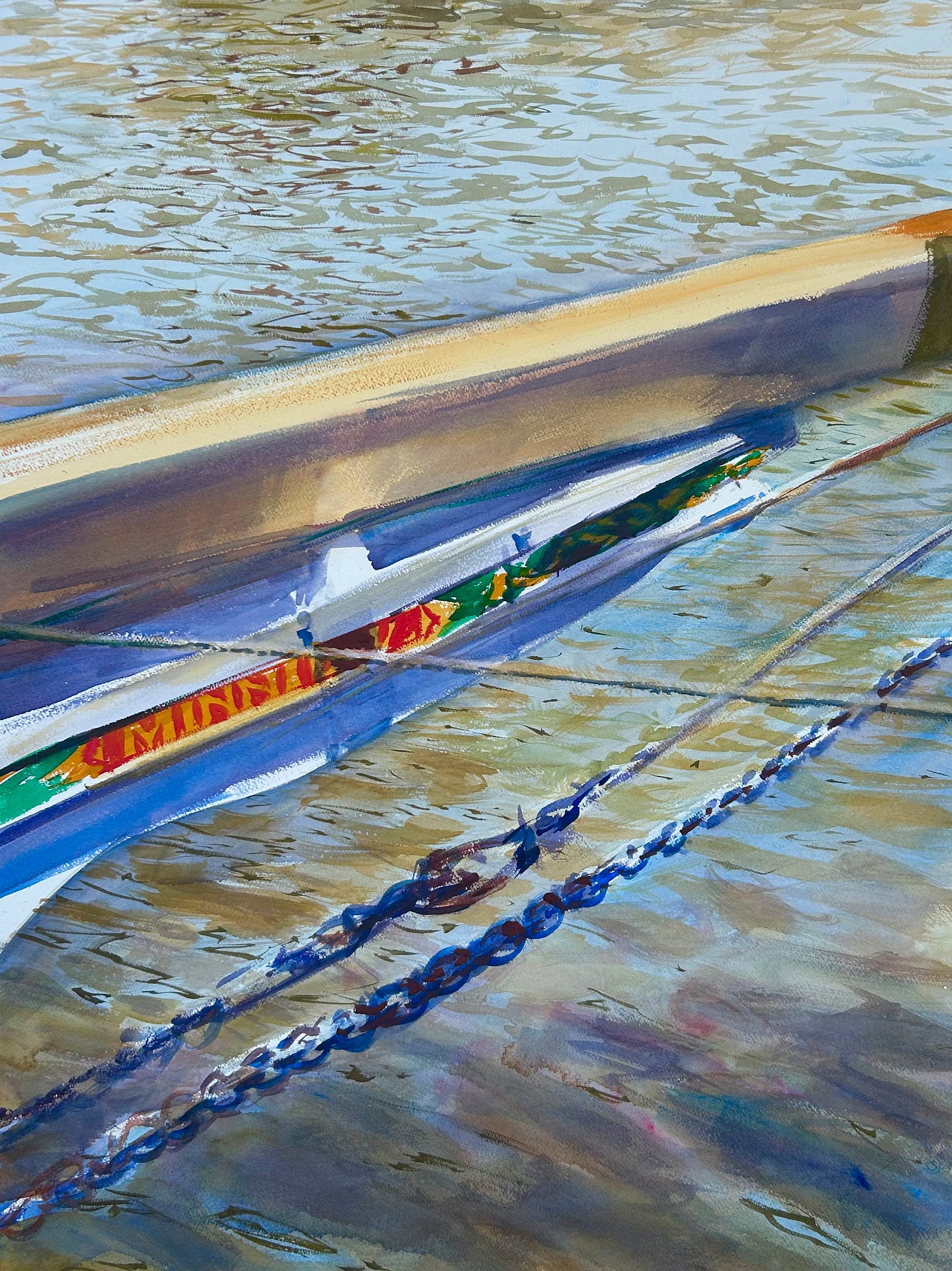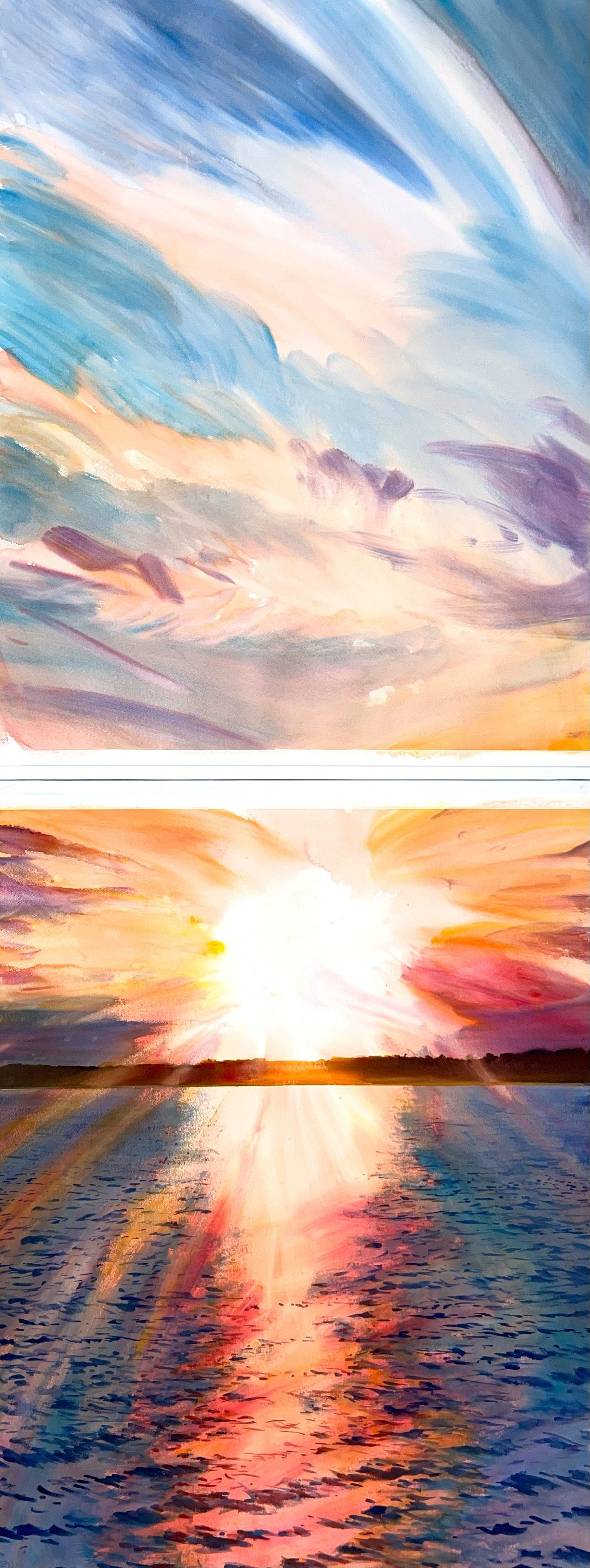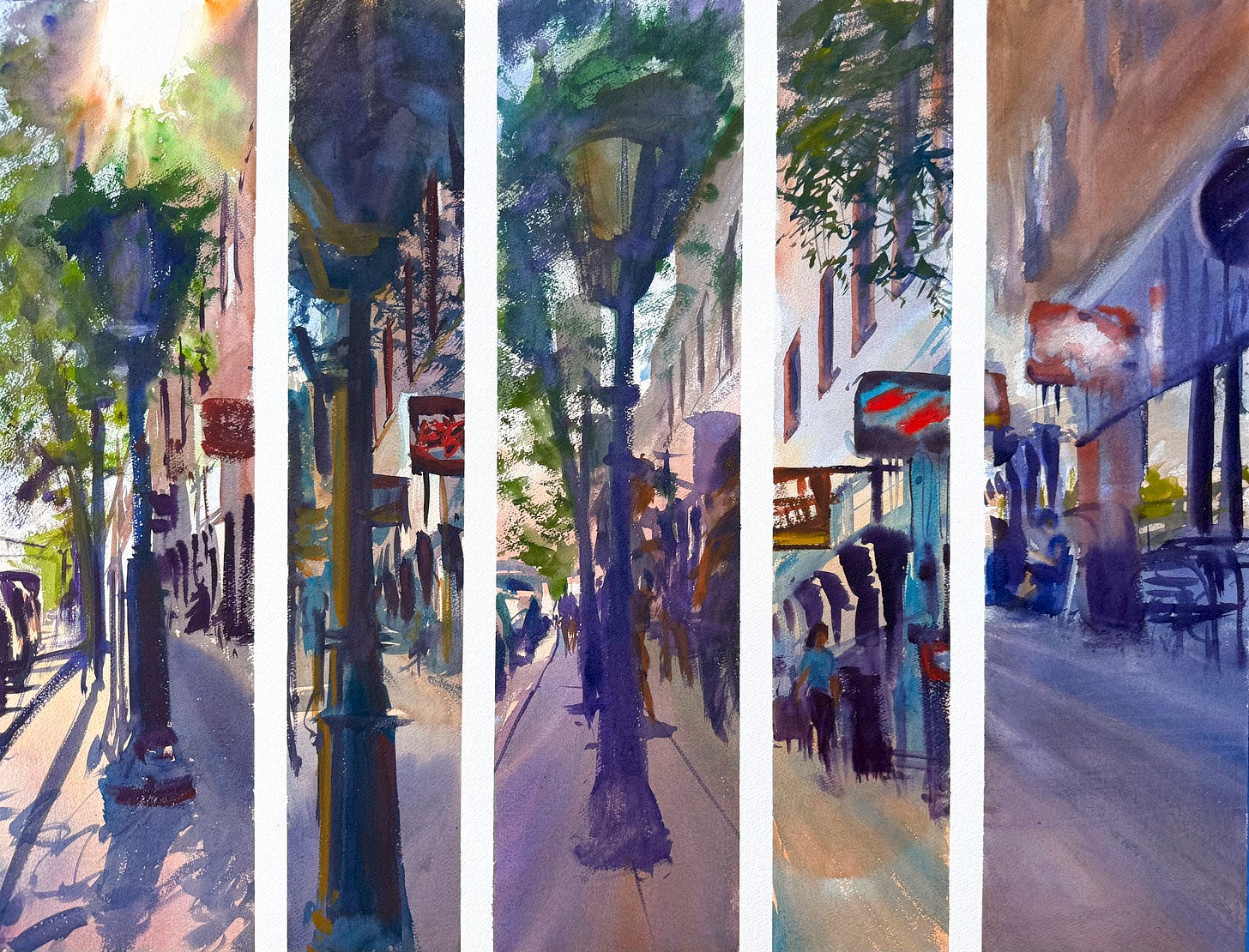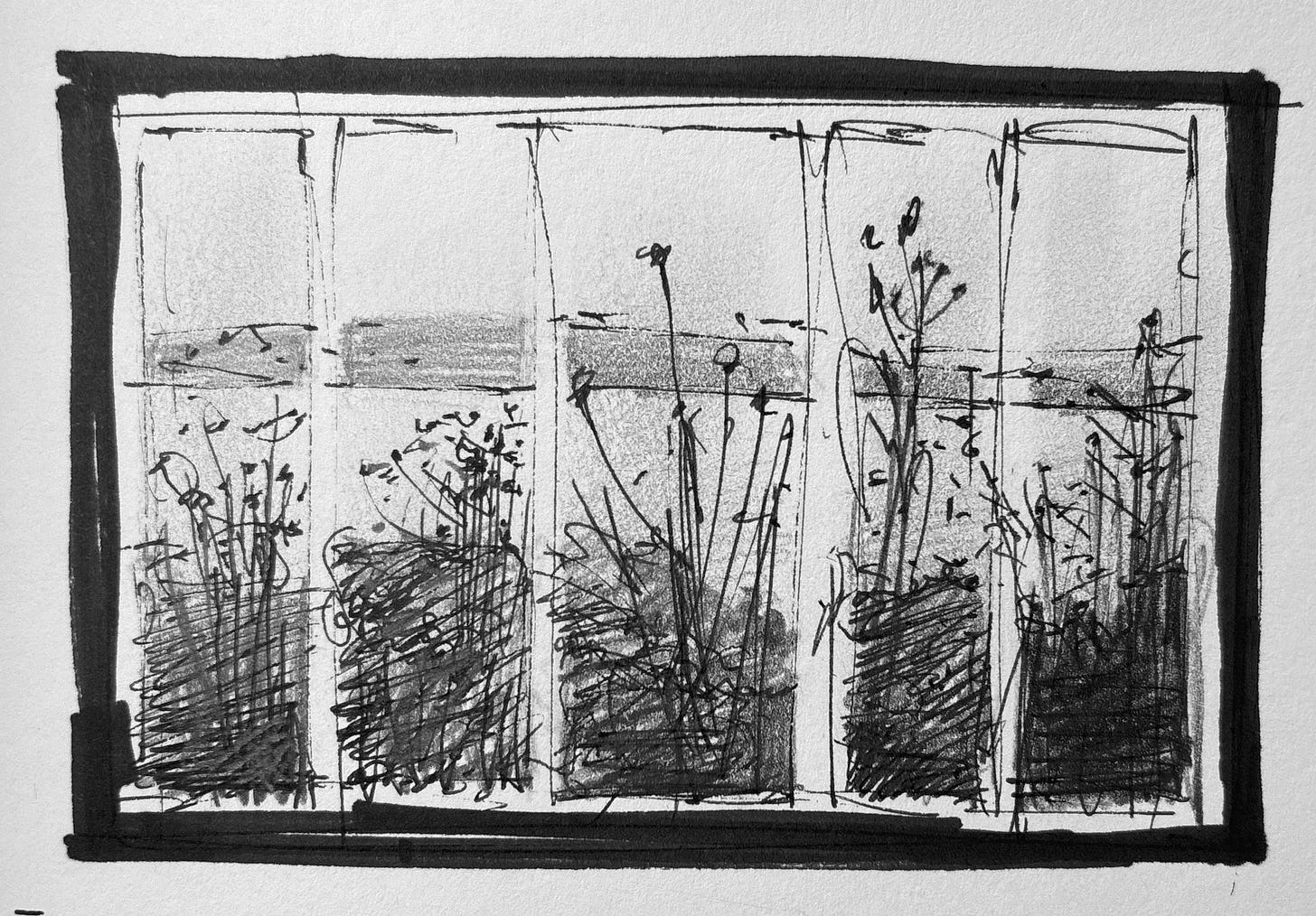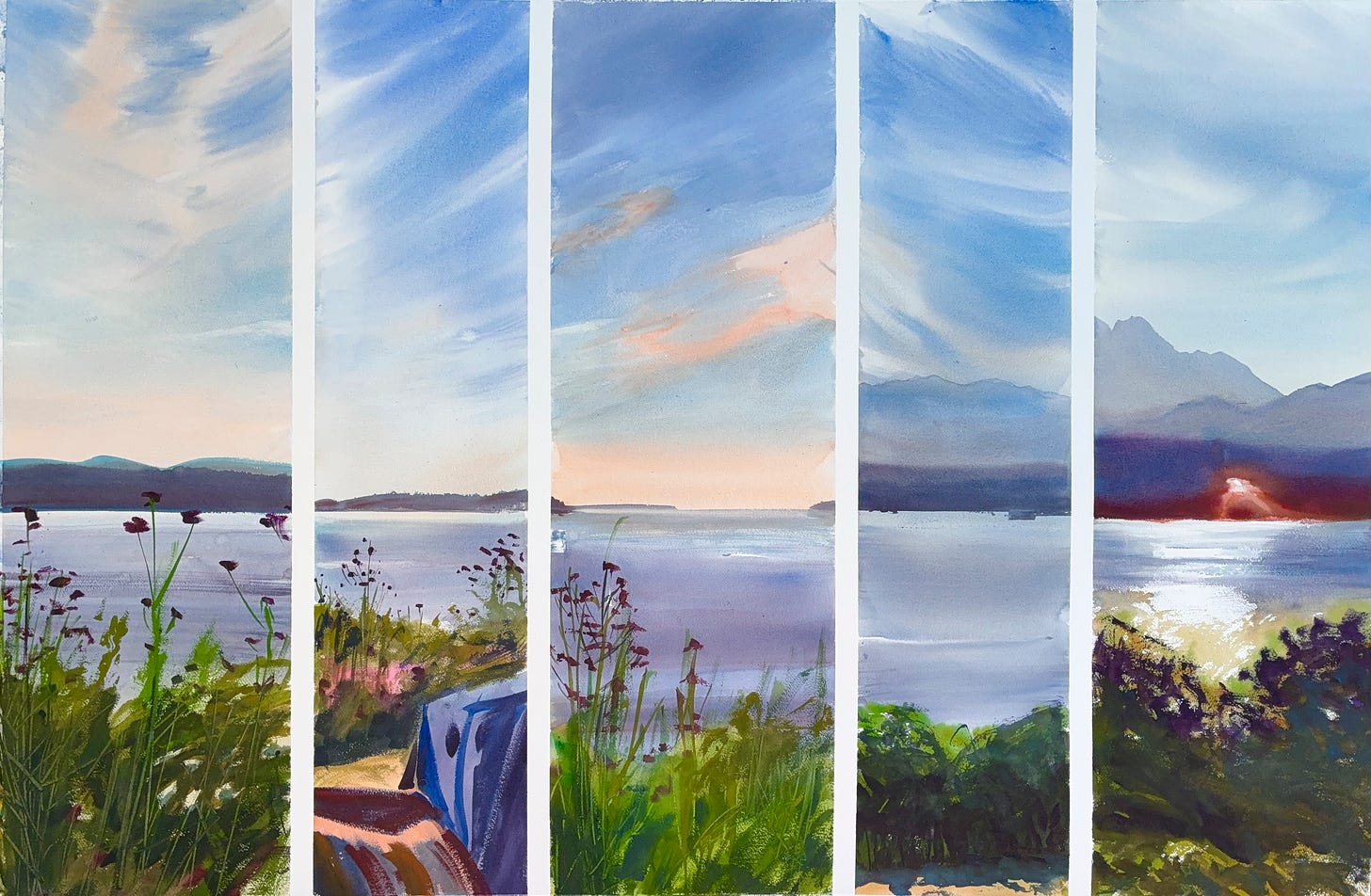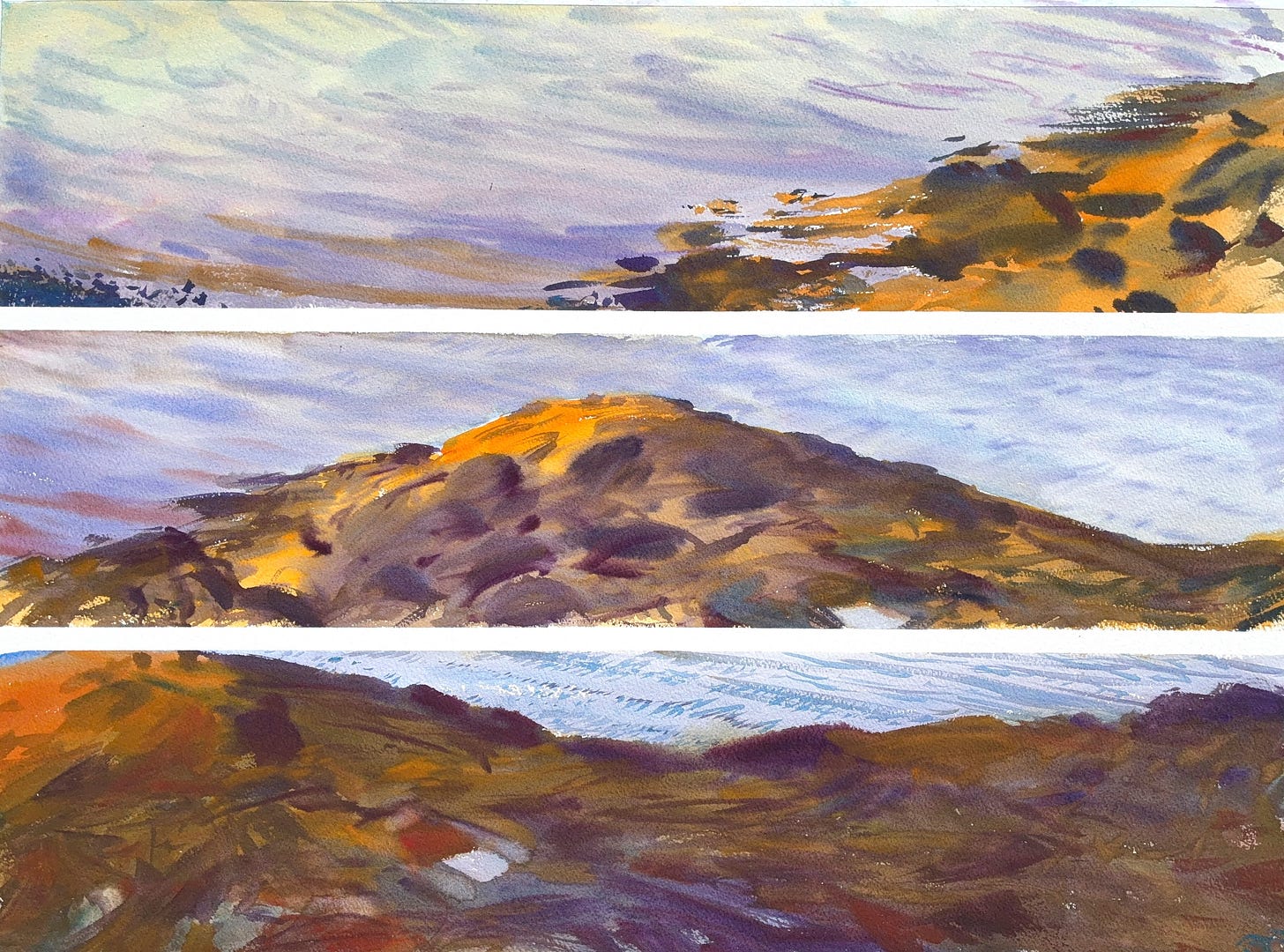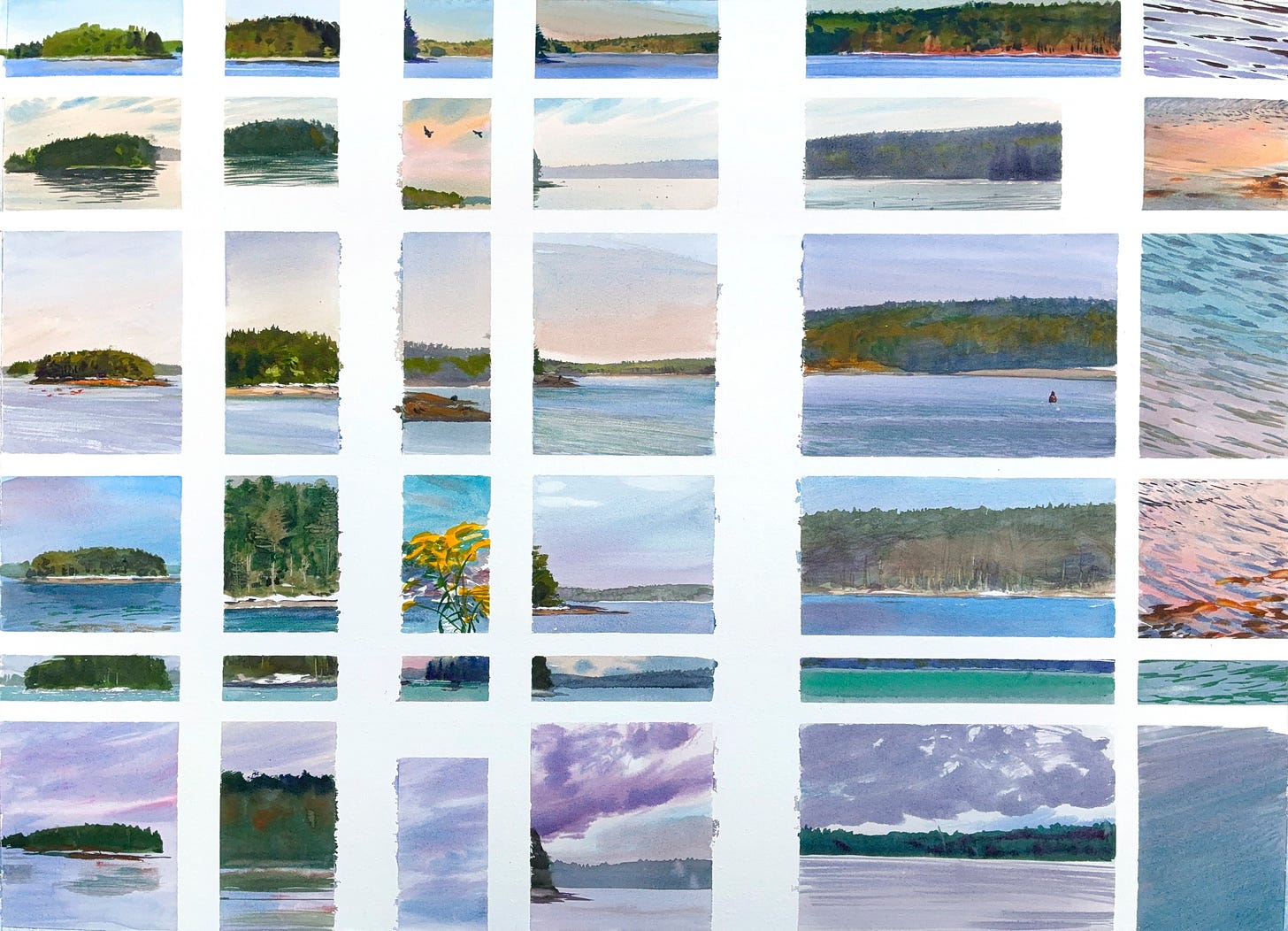Changing Light; Advancing Time
An update from Plein Air Easton, Plein Air Montana, Cascadia Art Museum, Audobon Artist Residency... Seattle now; Japan next
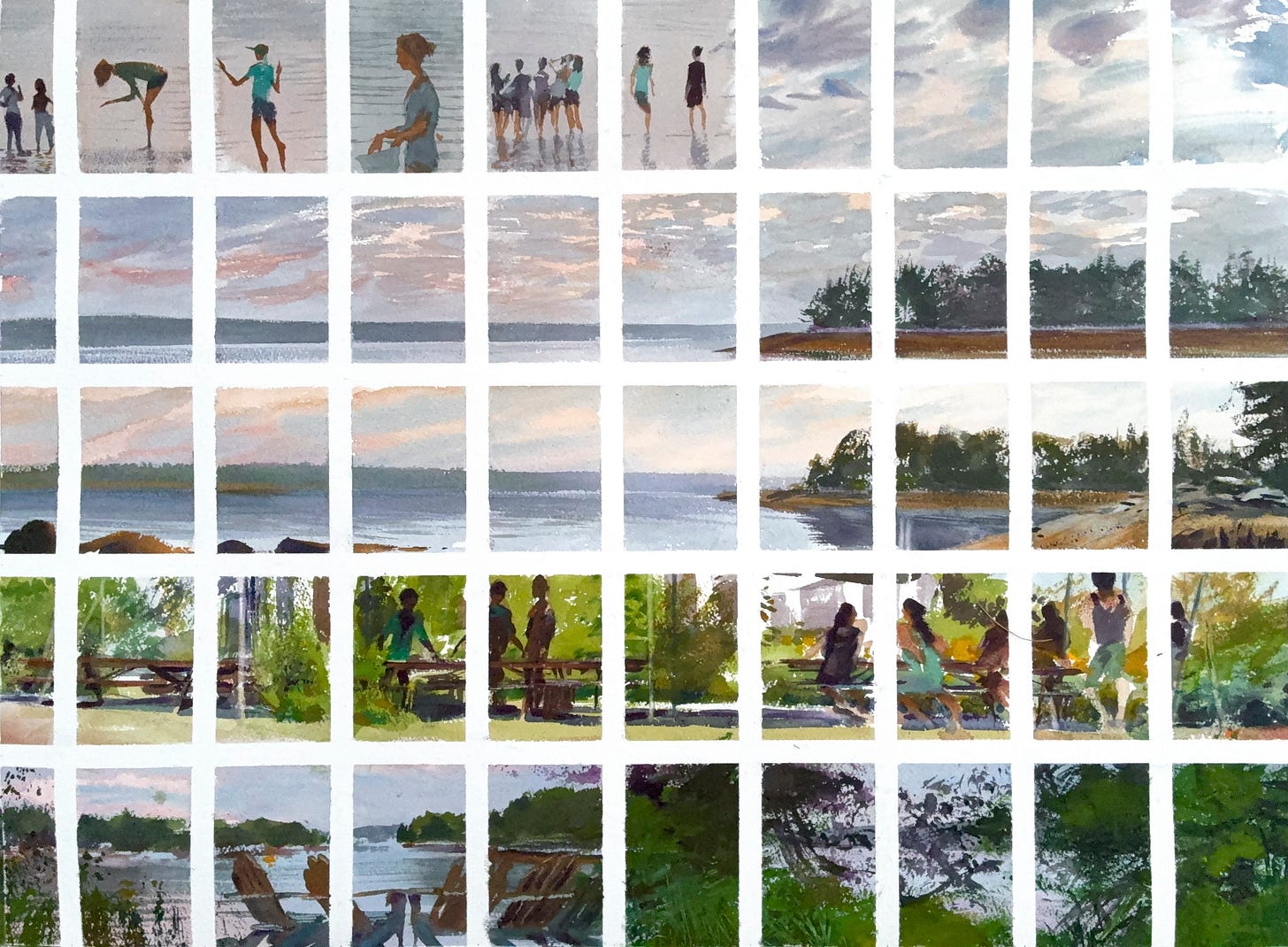
Tuesday, September 4, 2025, Afternoon
Seattle, WA
Although there are many logistical and organizational pressures on my time and energy right now - why not update the substack audience on various goings-on from the last two months?
When I wrote previously at the end of June, I’d just returned from Paint Under the Big Sky, in Big Sky, MT. Events since have consistently exceeded my expectations, bringing a number of firsts, a fair amount of professional recognition, and many, many paintings and drawings.
While not originally part of my summer itinerary, I drove from Big Sky to Seattle after Paint Under The Big Sky, to re-stock, refresh, and in general reset supplies for the summer. From there, I headed to Philadelphia to spend some time with friends (I lived in Phila myself from 2012-2014), before the next event in Easton, Maryland, Plein Air Easton 2025. I knew I wanted to give myself time to do this event right. Plein Air Easton 2024 was the first Plein Air Painting Event I attended (was juried into), and so would be the first event I’d be doing for a second time. The urge to outdo oneself is natural.
A key aspect of my best performance at these events has been giving myself enough time to get to know the place as I work, or in simpler terms, be the first to show up, the last to leave. I arrived in Easton several days before the “competition” began, giving myself time to unpack, to paint, to soak in the atmosphere.


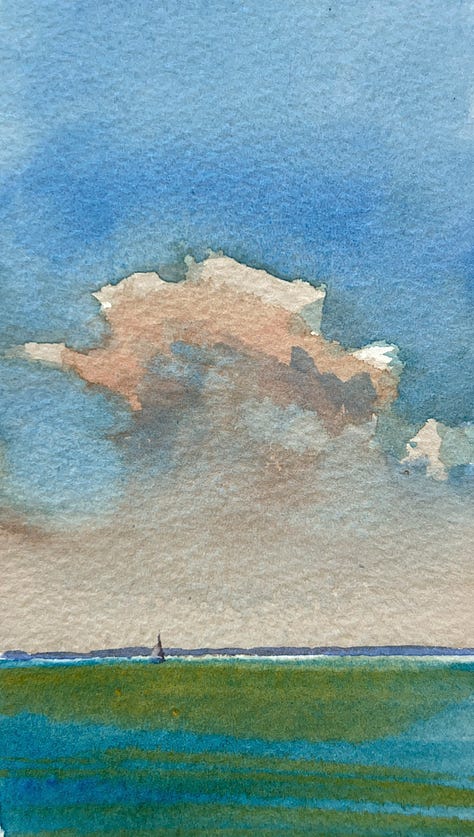
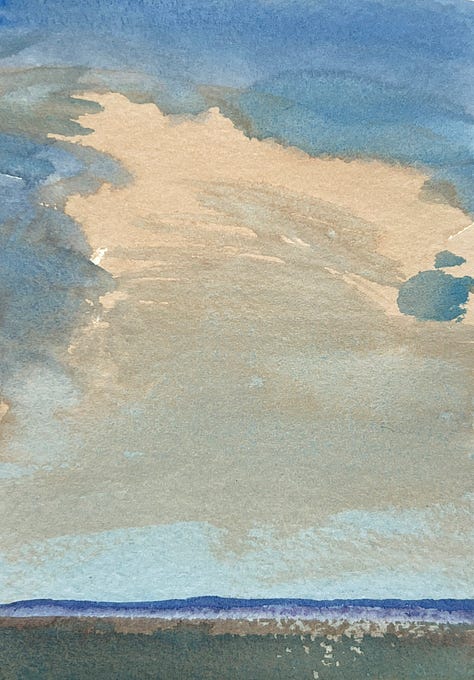
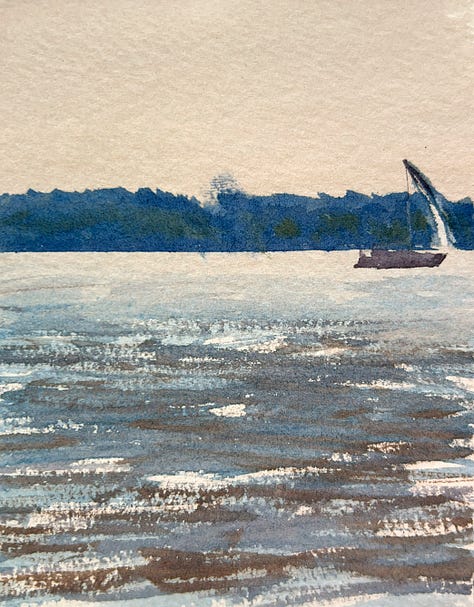
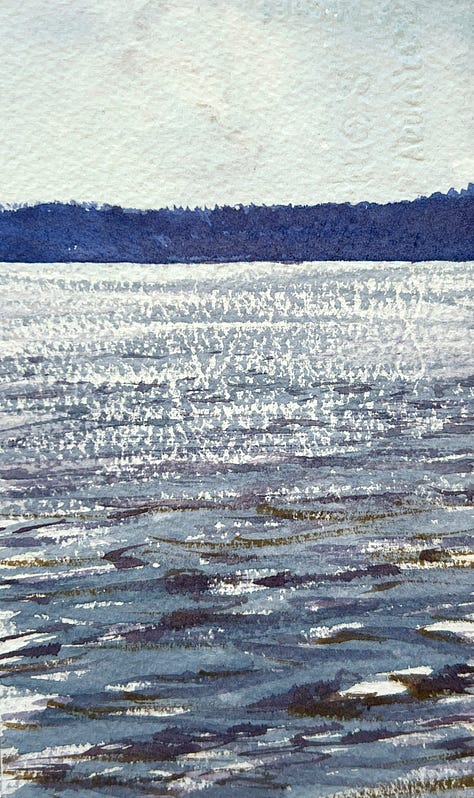

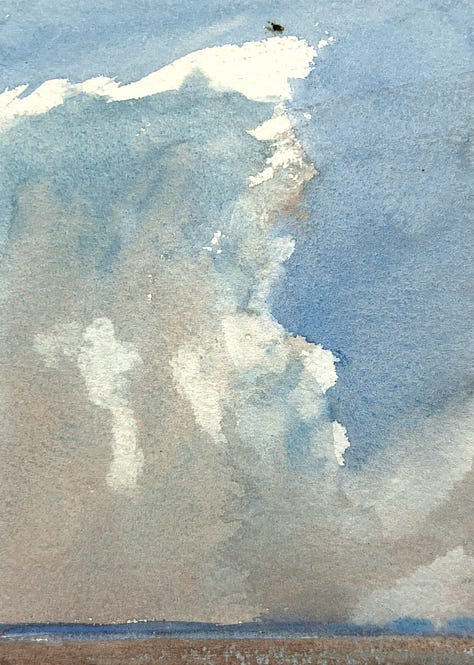
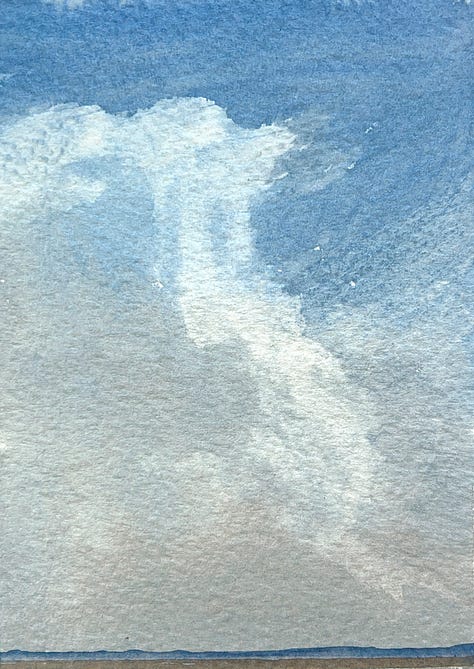
Even as early as last year when I was in Easton, I’d had in mind a large-scale piece of the Cormorants perched on the piers over the water by Doc’s Sunset Grille in Oxford, MD. It was the first scene I sketched upon arrival in 2024, but a painting of the scene did not materialize. For Easton 2025, each artist is allowed two “competition” pieces to submit for pageantry. I knew as early as last year I wanted to do a diptych of the cormorants at Doc’s, that was the vision. I also had a proven working method from Big Sky of making many, many small works at once, a process which allows me to try many ideas and to absorb the benefits of voluminous practice. When I asked the Easton organizers about submitting two pieces both of the maximum allowable dimensions (40 x 50” on the outside of the frame) I was cautioned that the pieces would have to be vertically displayed, stacked one above the other, with the frames touching. Perfect! I knew the format I needed to practice for the submission of the final two works - a large-scale diptych in watercolor, both pieces 40 x 50”, with a combined dimension of a 40 x 100” image. I’d never worked that large in plein air watercolor before (only up to 40 x 60”), and actually had never heard of or met anyone who had. Just because it hasn’t been done before doesn't mean it can’t be done. Plus, it was technically within the rules. I knew it would be extremely challenging, but as I saw it, I had a week or so to practice the format, a vertical diptych, one image bisected horizontally with a 2 to 5 ratio (40 to 100).
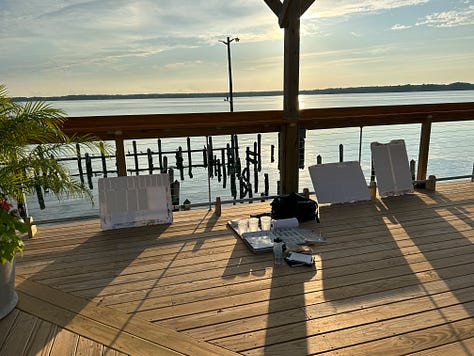

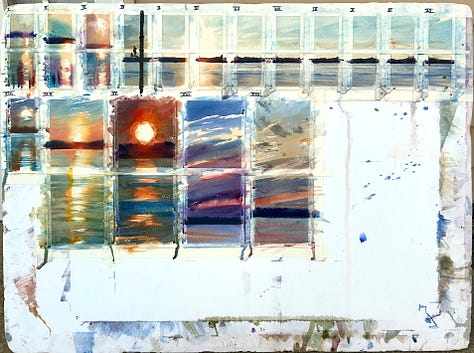
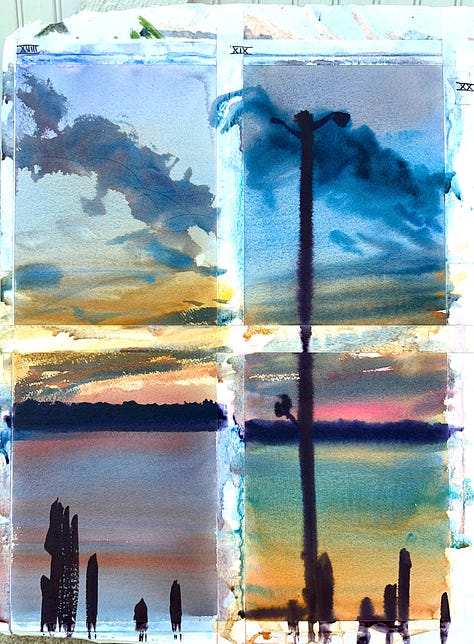
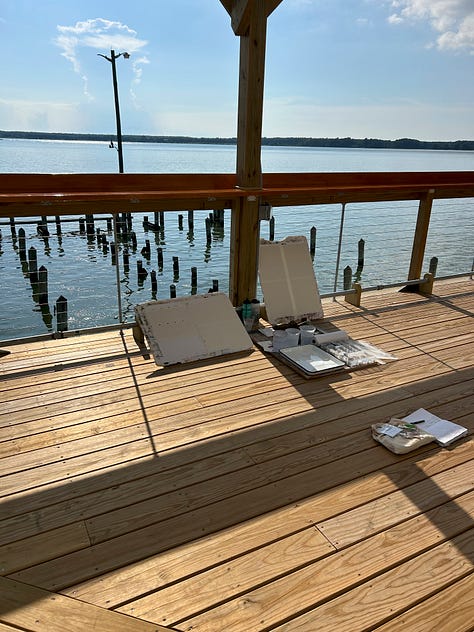

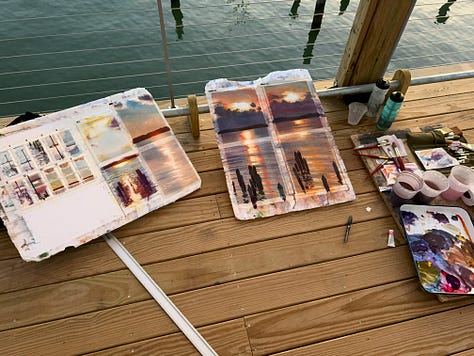
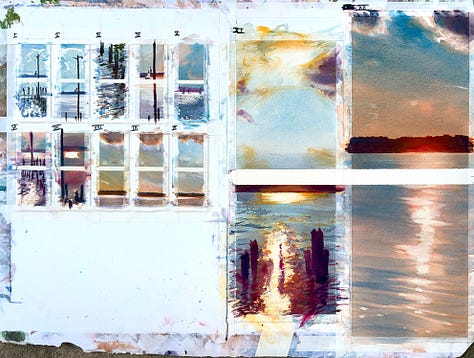

Whenever I could, and a scheduled painting location for the competition didn’t take me away from it, I would return to Doc’s over the week, painting the sunset hours compulsively, over and over and over, trying out many different ways of approaching the work, but always trying to paint what I was truly seeing in full objective chromatic intensity. For some of the suggested location painting events scheduled, I challenged myself further, pushing my own boundaries of what I’ve been able to do before within certain scales and time frames. During the course of the entire event, I created 124 paintings, ranging in scale from 1 x 2.5” to 40 x 100”.
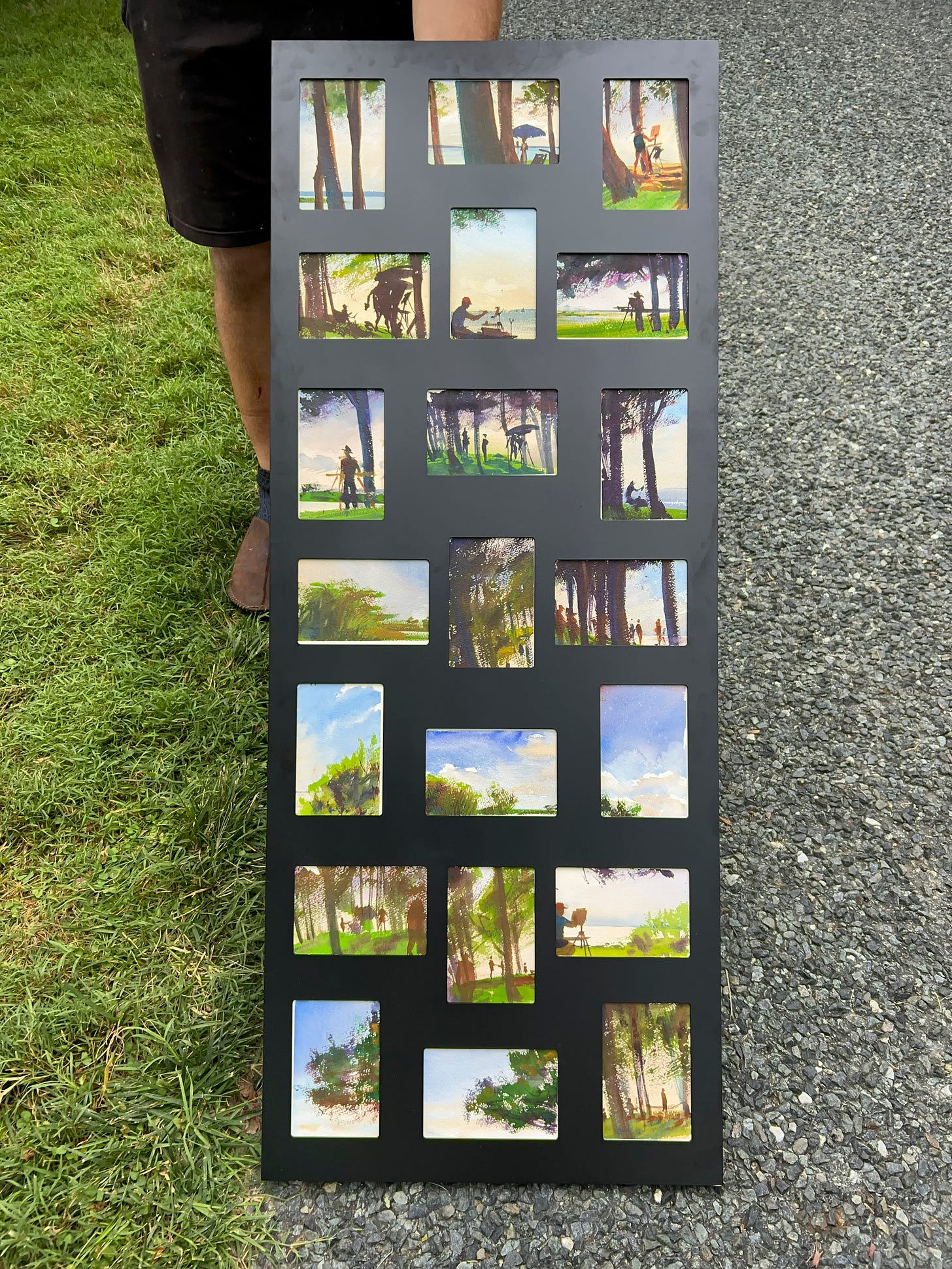
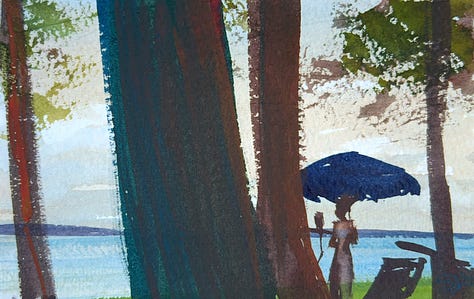


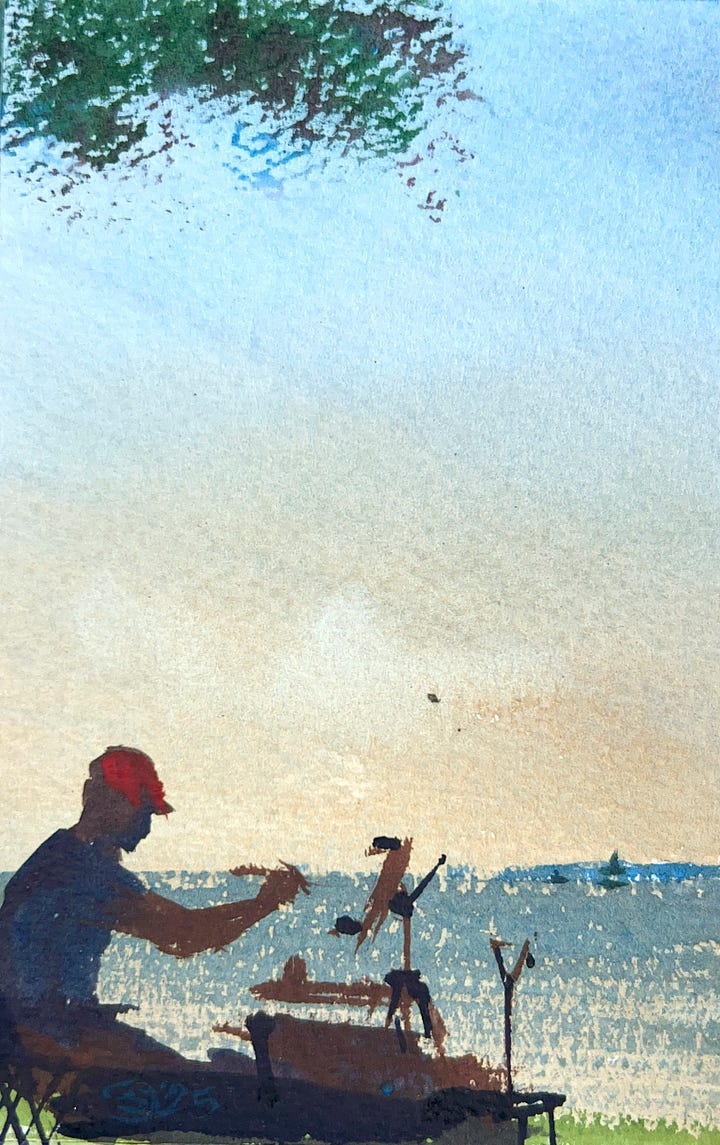
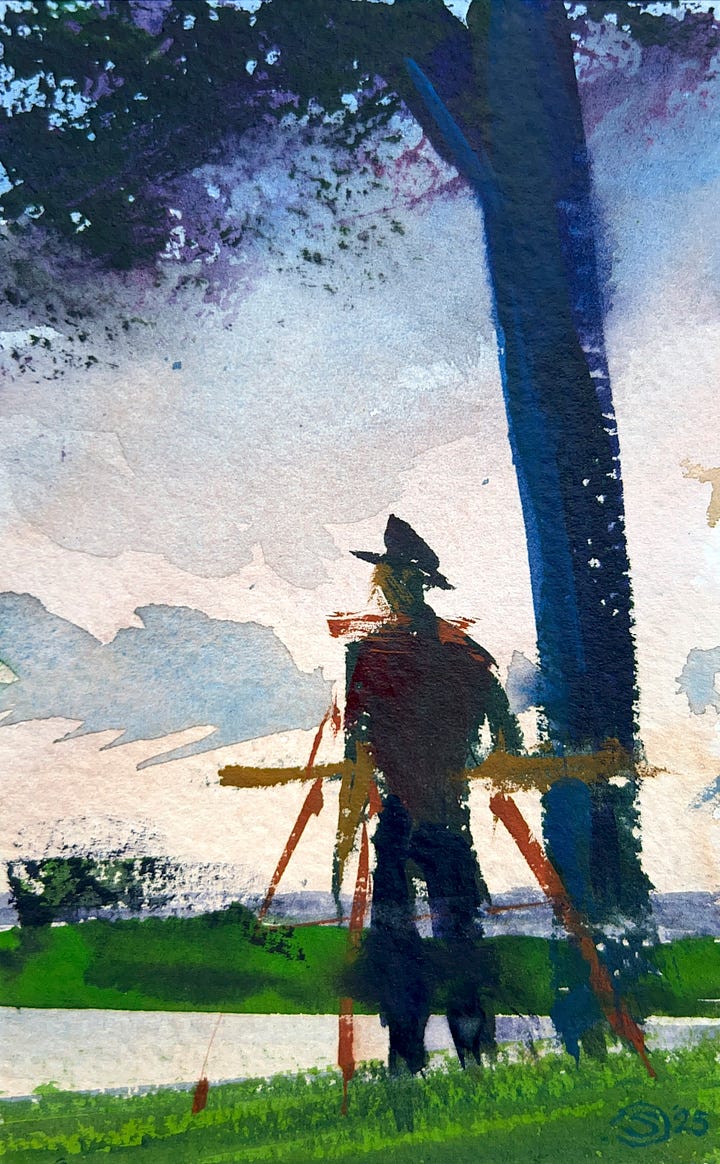


The final 36 hours of the event were a weekend whirlwind. On Thursday, I’d submitted my giant diptych of the sunset (no cormorants, they were absent the day I painted it) from Doc’s, and was gearing up to paint the “quick draw” on Saturday morning, in which artists have two hours to paint a scene from life and submit it for pageantry.

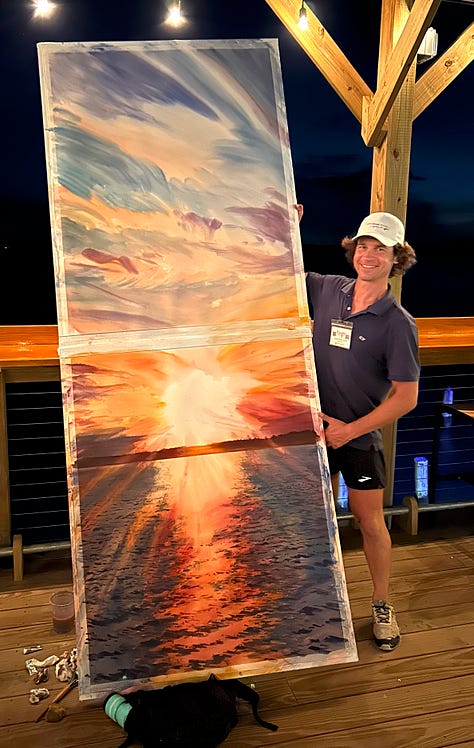
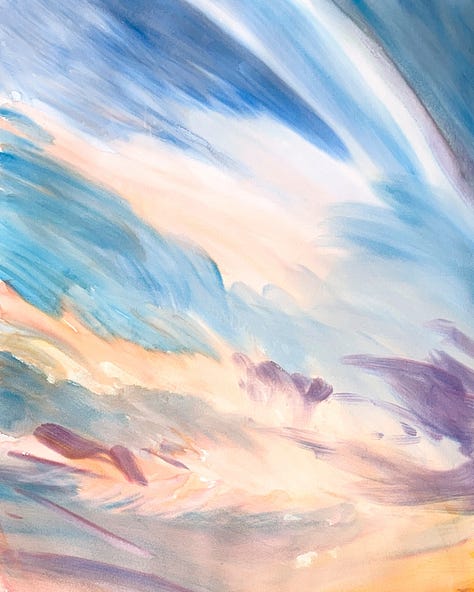

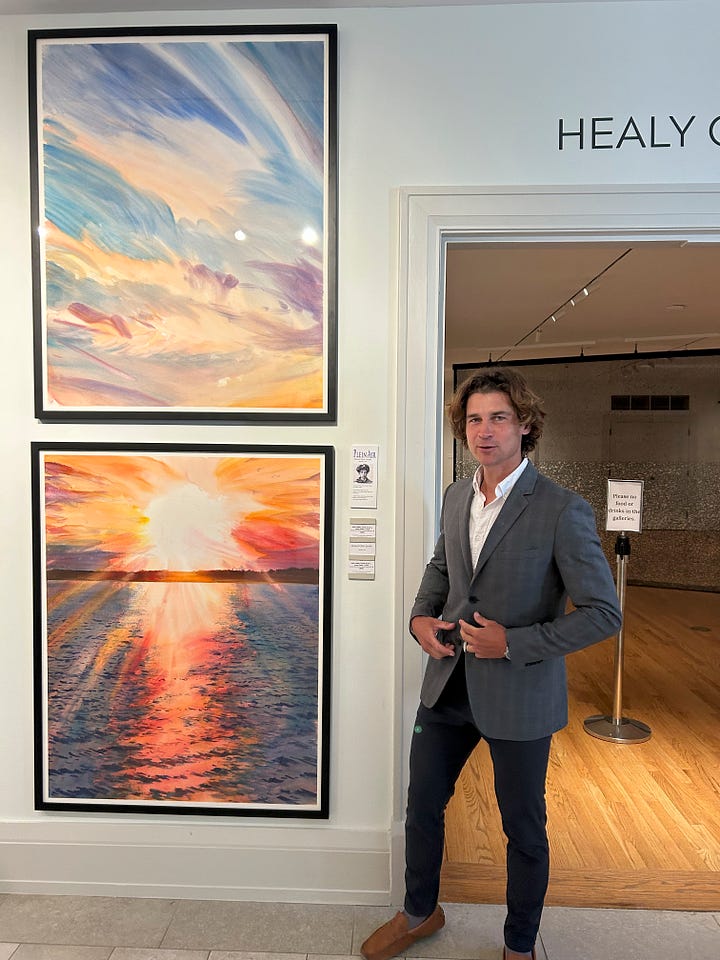
I had just completed my first ever 40 x 100” watercolor (diptych), so why not another one? It was pouring rain, but still I managed to work semi-effectively under my rain tent (which barely contained the work), a scene of the street in Easton, the water reflecting taillights.
Without a chance to dry off or even change, I went straight into giving a painting demonstration the same afternoon, a portrait in watercolor of a wonderful woman, 96 years young. Her daughter purchased the piece.
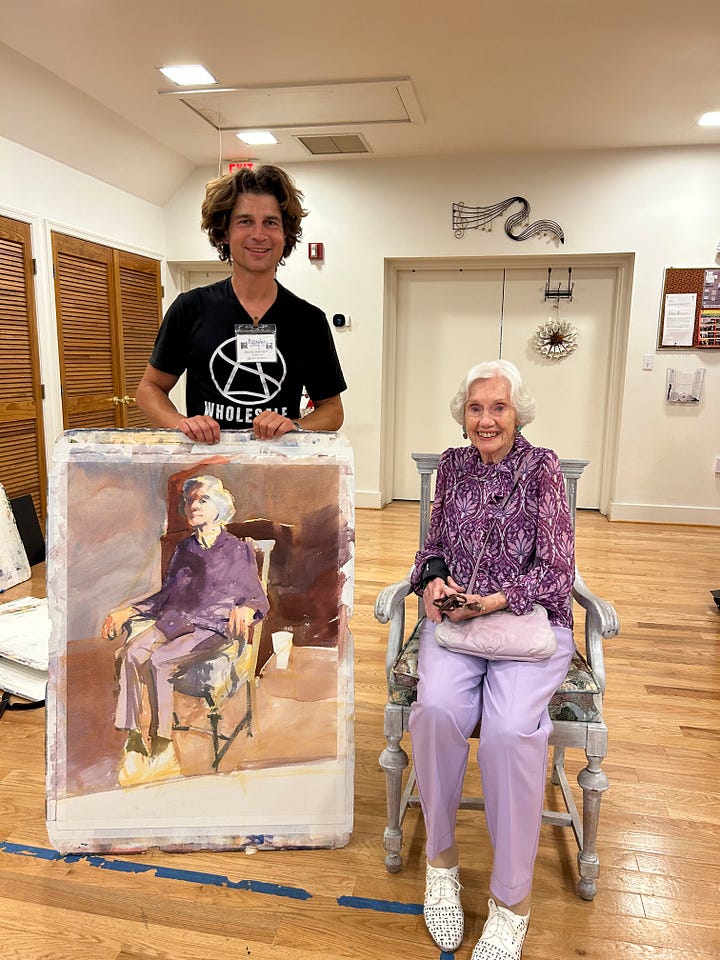
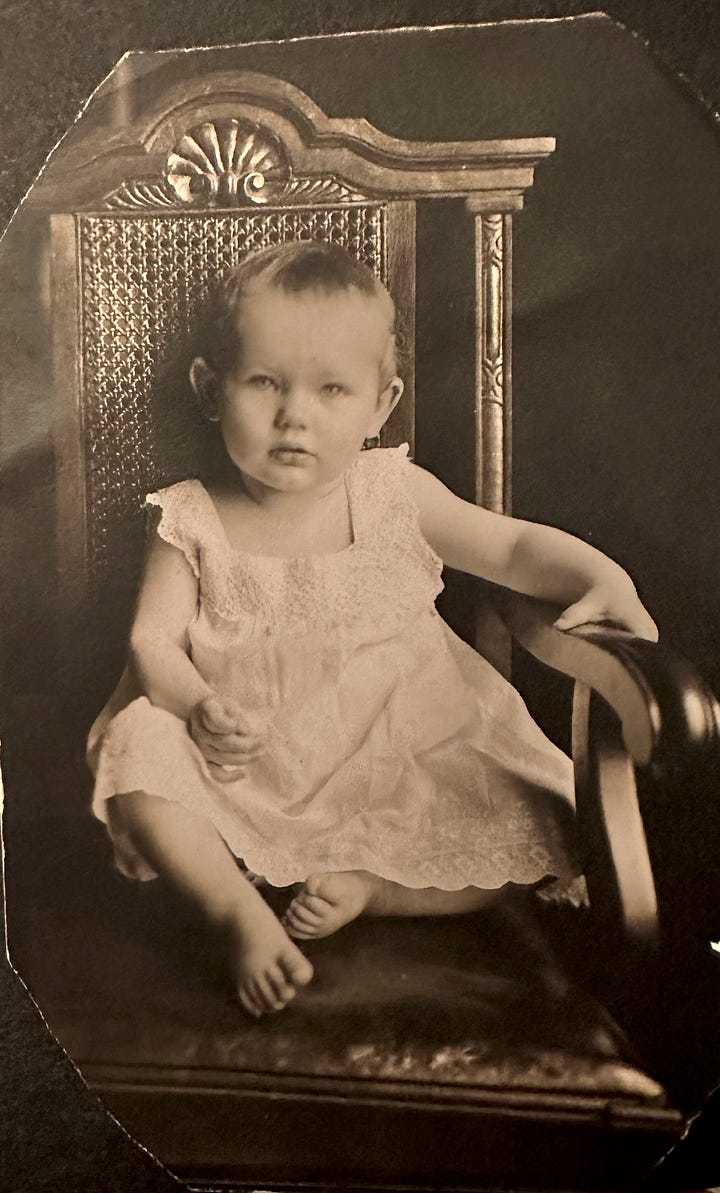
The juror Peter Trippi gave my sunset diptych the award for “Best Use Of Light”, for which I am grateful and honored:
A client purchased a portrait of a boat in Tilghman from last year’s event, another bought my “small painting” on Sunday, and the bottom half of the sunset diptych sold to a collector (I gave her the other half, unwilling to separate the two halves of the work of art). My friend and fellow artist Martin Geiger won the Grande Prize for his work.
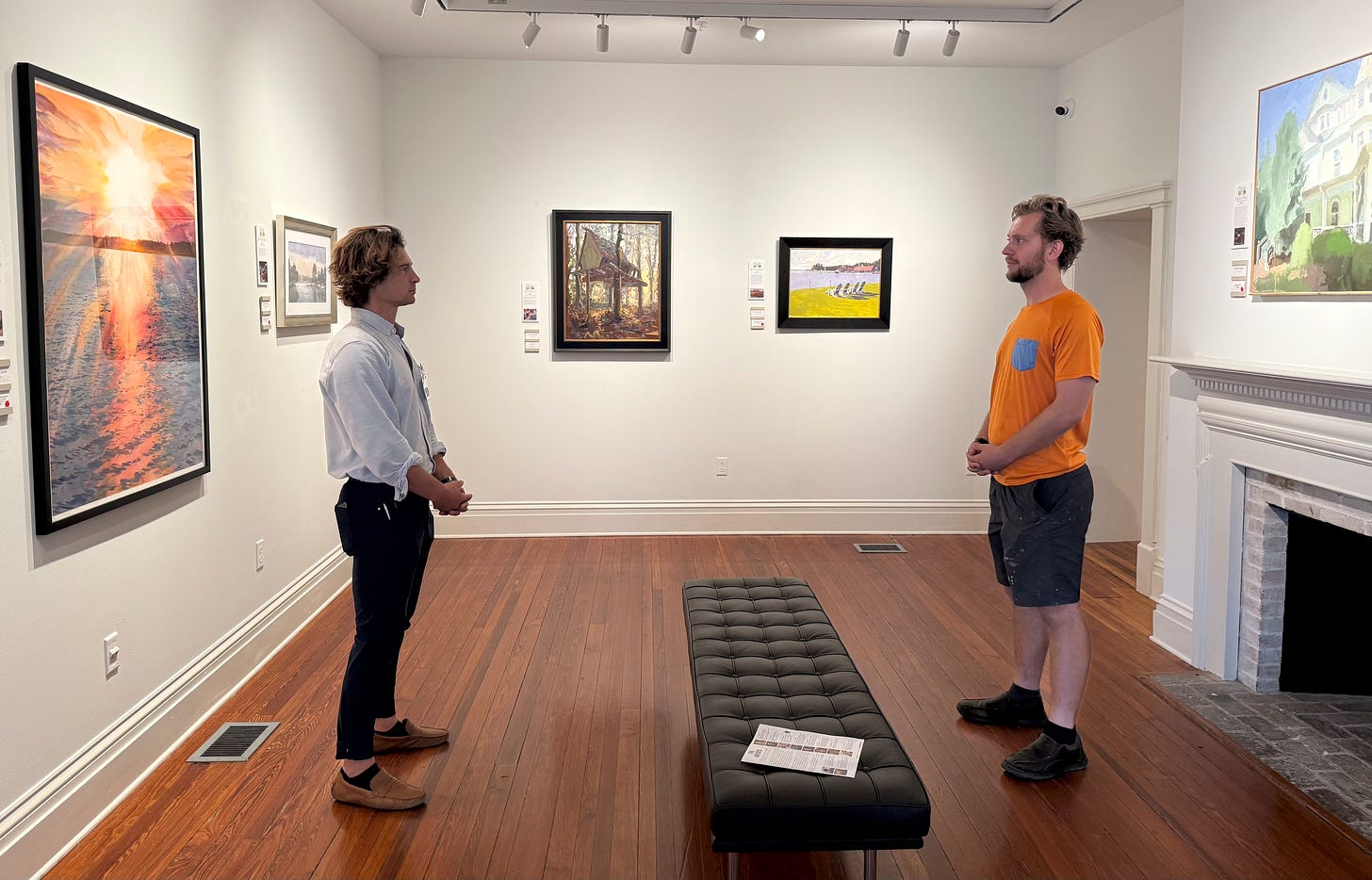
Rather than bask in any kind of afterglow, I accepted the warm words of collectors and fellow artists, and (almost) immediately set out back across the United States. I did spend one extra day in Maryland to breathe - which was wonderful, thank you to those of you in MD who made that possible. I next traveled by car to Bozeman, MT, for Plein Air Montana 2025, the second Plein Air Event I’d be doing for the second time. Although the event had begun on Sunday evening, it took three days to arrive by Wednesday, giving me one day, Thursday, to paint everything I would submit for the competition. As I’d been experimenting already with multiple views and times of day within the same piece of paper during Easton…
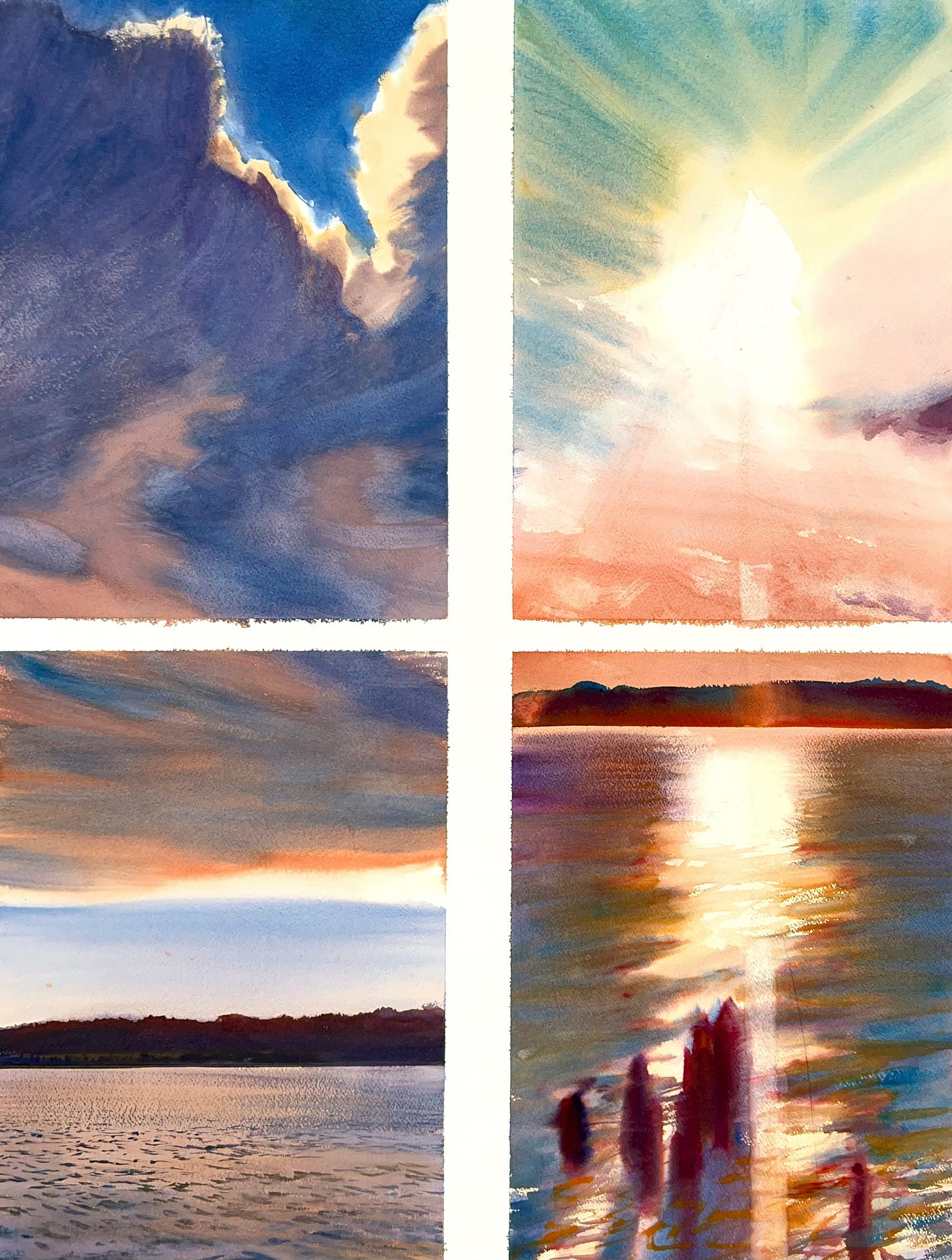
…I decided to push that idea forward for Montana, taping off multiple rectangles in vertical format within the same sheet of paper. I spent the morning Thursday preparing the papers and giving a television interview, and all afternoon from 3:45 to 9:45pm painting. I was extremely proud of the result and could tell I was onto something with this line of inquiry.
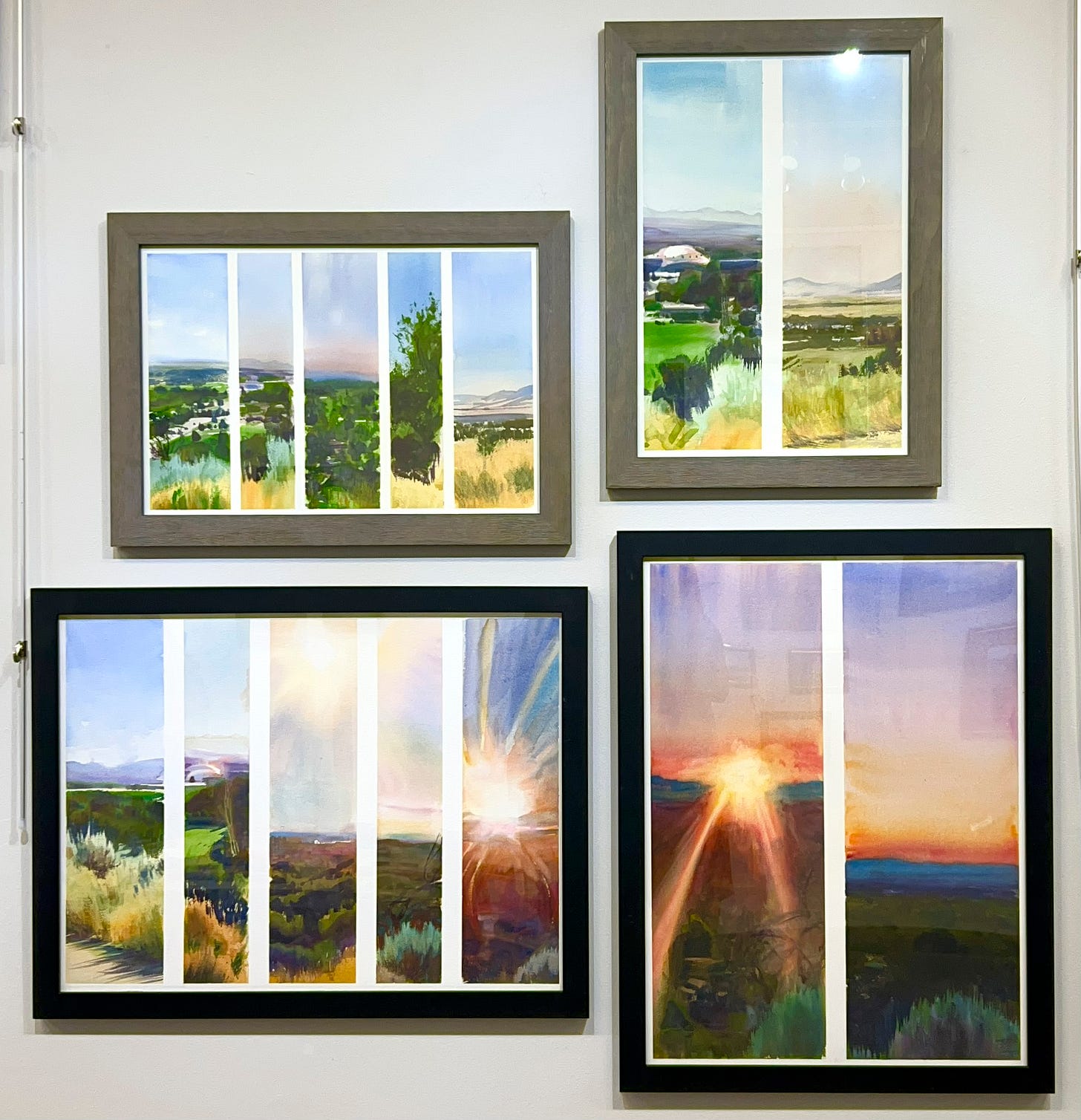

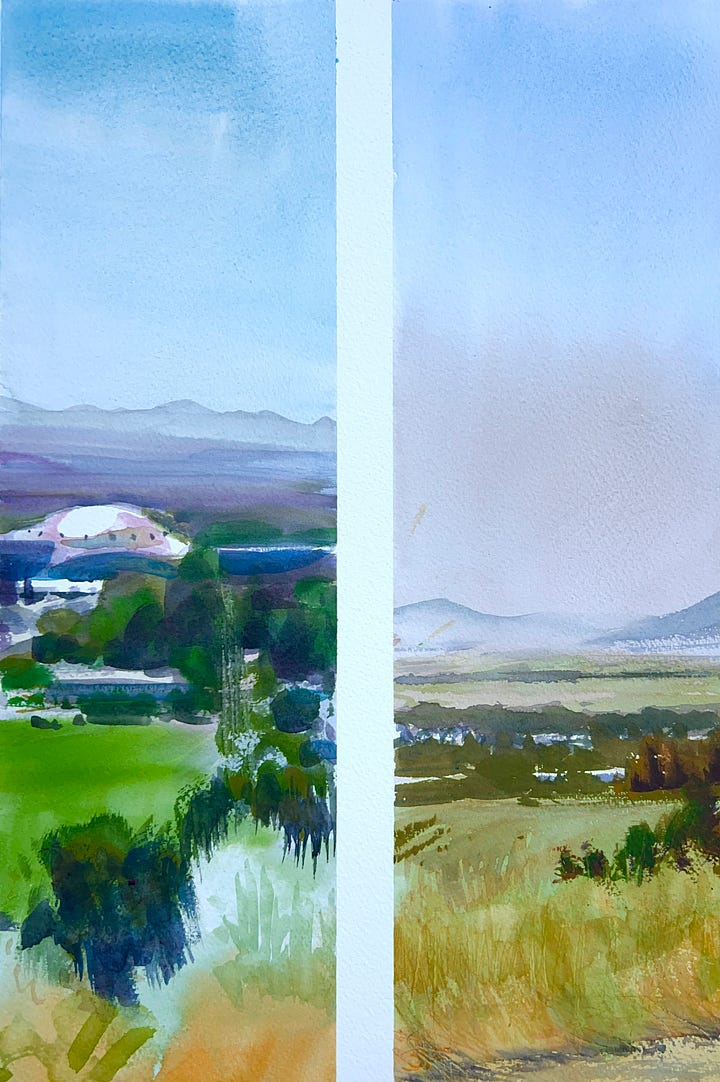

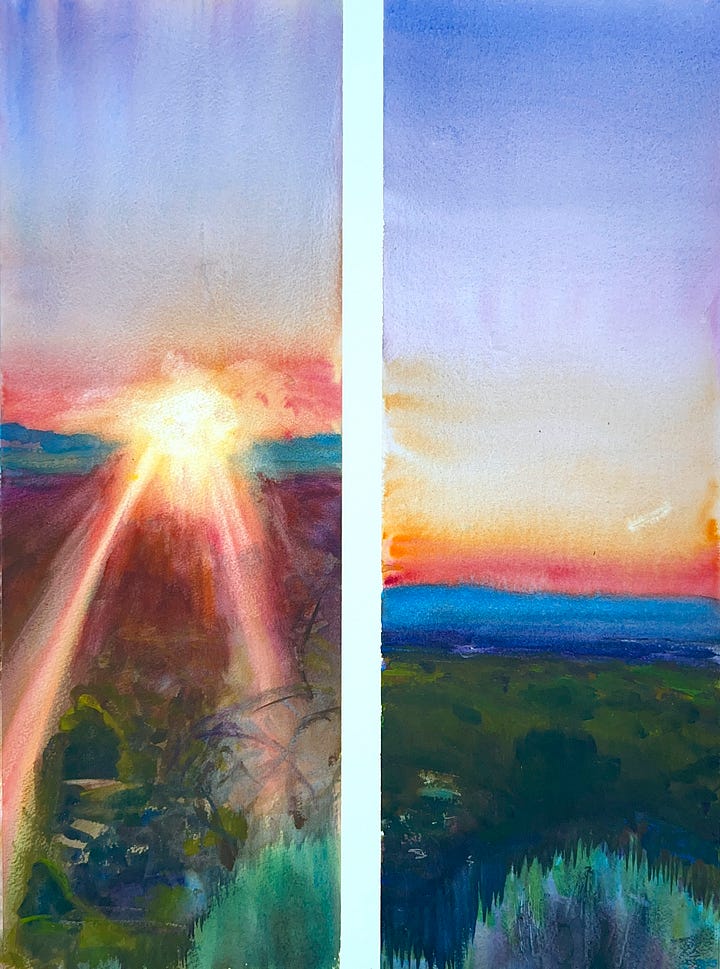
The reason to make work this way: I had already been working in multiples, 15 or 20 or 30 paintings within one session, but once separated from the board, difficult to read by the audience as more or less one work of art. Their effect in individual reception was still powerful, but so much more so when seen all together, understood as a single afternoon, an honest representation of changing light and advancing time. So, what is the solution? To just make them all on the same sheet of paper, one work, many views, many smaller paintings within one work of art.
After a beautiful Friday of hiking, including a sun shower and a mellow non-painting evening, the quick draw on Saturday was reinvigorated extension of the same questioning, and I could tell by now, I wanted to push this idea further.

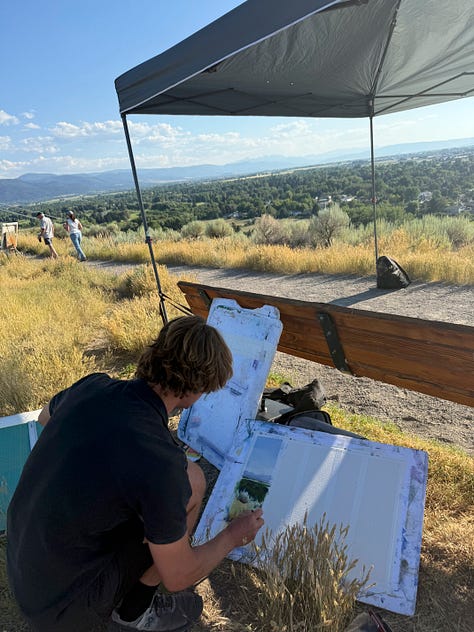

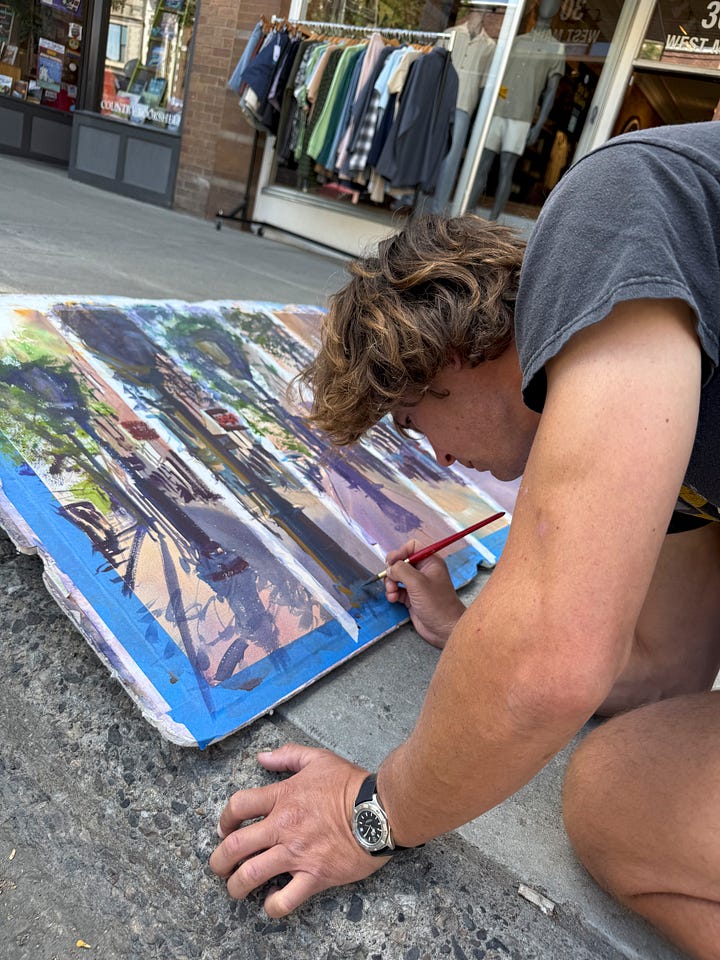
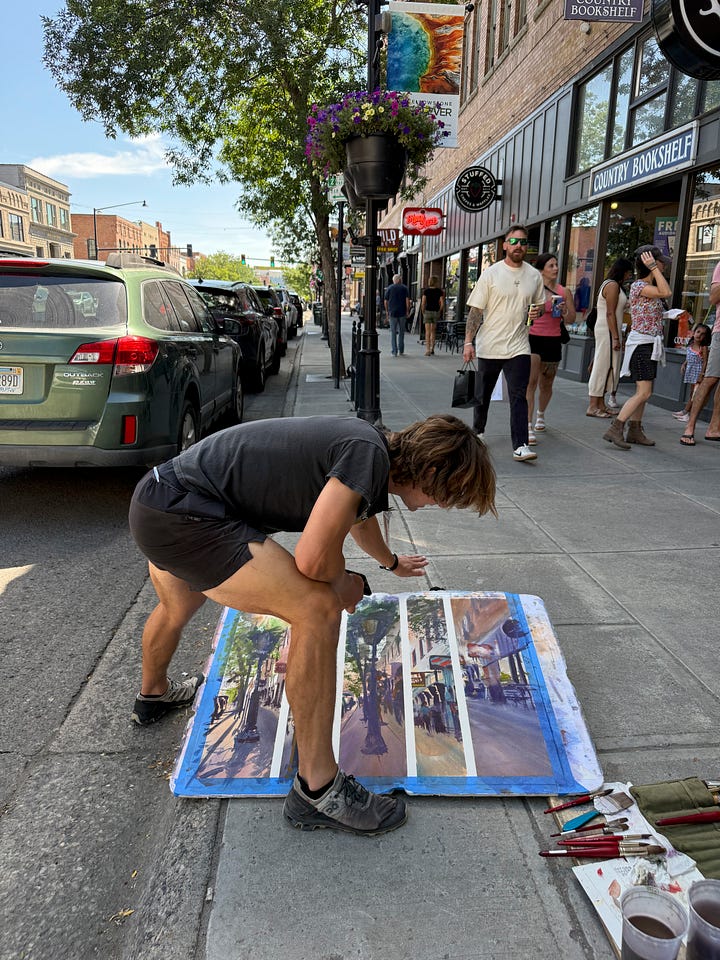
Earlier this year, I’d said yes to a fundraising event for the Cascadia Art Museum on August 9th in Edmonds, WA, knowing full well that I had to board a small ferry to Hog Island Maine the very next day, August 10th, beginning a two-week artist residency there. When I said yes to Cascadia, I had no idea how I would make both events work logistically, as I typically drive everywhere, carrying my large-format supplies in the car. As I saw it, there was only one way to make both pursuits compatible. After the Montana event ended, I drove from Bozeman to Boston, MA, dropped my car at a friend’s place (thank you Alex!) And flew back to Seattle, a week out from the museum fundraiser, in time to do a scouting walking tour of the grounds.

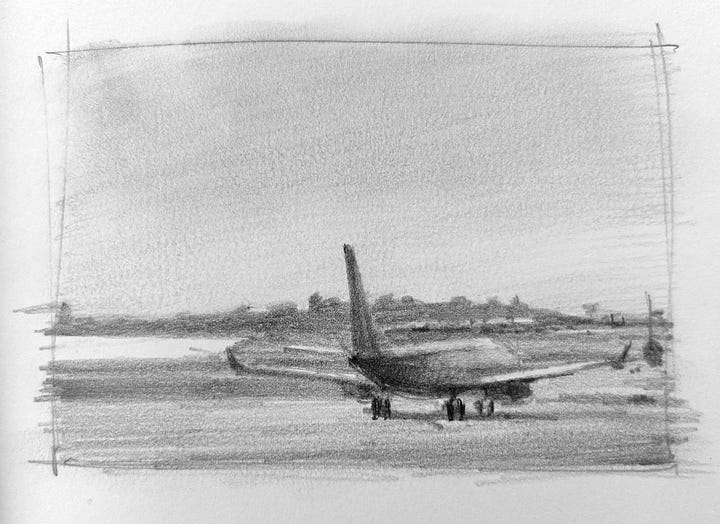
The event itself called for a plein air painting session of two hours in the evening before the auction program, the work produced to be auctioned off, live that night for the museum’s benefit. I knew what I wanted to do - a large-scale 40 x 60” watercolor piece with 5 panels, each showing a different view, but keeping the horizon line consistent. I made a small sketch showing this idea in pen and pencil. Typically I don’t make such compositional notes, but in this case, it made sense.
With my good friend Chris as my +1 and documentarian, we had a grand time painting, schmoozing, and enjoying the beautiful sunset light over the Puget Sound.
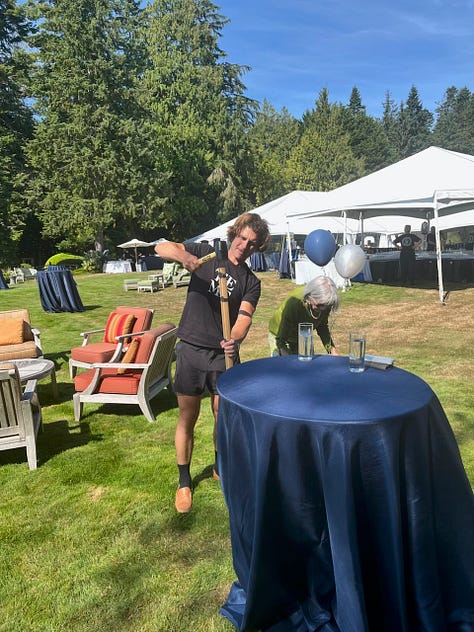

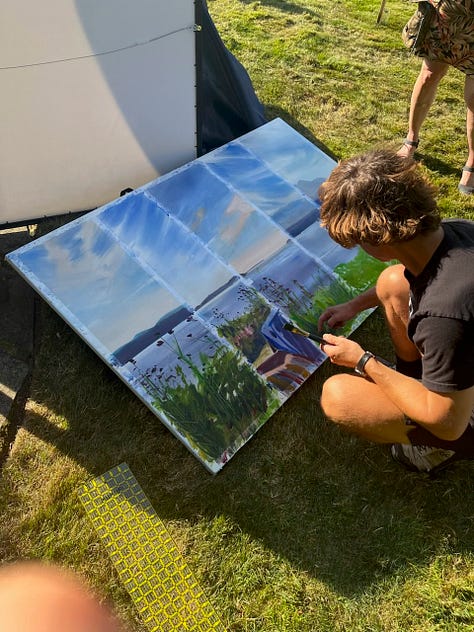
Immediately after the event, I went straight to the airport for my redeye flight to Boston, woke up on the East Coast, snagged my car from my friend’s place, drove to Maine, and made it to Hog Island with a minute or two to spare. Thank you to the ferry boat captain and the portage assistants who made island matrimony on-time and possible.
Hog Island, which in essence turns into a camp for adults over the summer months, was spectacular. My initial idea for the Artist Residency of painting 1000 puffins was quickly dismissed, as there are no puffins on Hog Island itself - the Atlantic Puffin is an endangered seabird found a bit further out, and this time of year, barely at all, most of them having already moved out to sea for the season. What Hog Island does have in abundance is a magical amalgamation of rocky shoreline, intertidal wonders, rock weed, saltwater, near and distant islands covered in pine, and spectacular, wondrous, ever-surprising atmospheres and beyond them the sun, the moon, the stars. To look up at night and see the stars - nothing quite like it - but the best part of the island is the people who work and stay there. I could not have hoped for a warmer welcome from an open and gracious group, whether learning about nature journaling from a Maine Master Naturalist or swapping stories of international travel with seasoned exploratory scientists, artists, conservationists, activists.
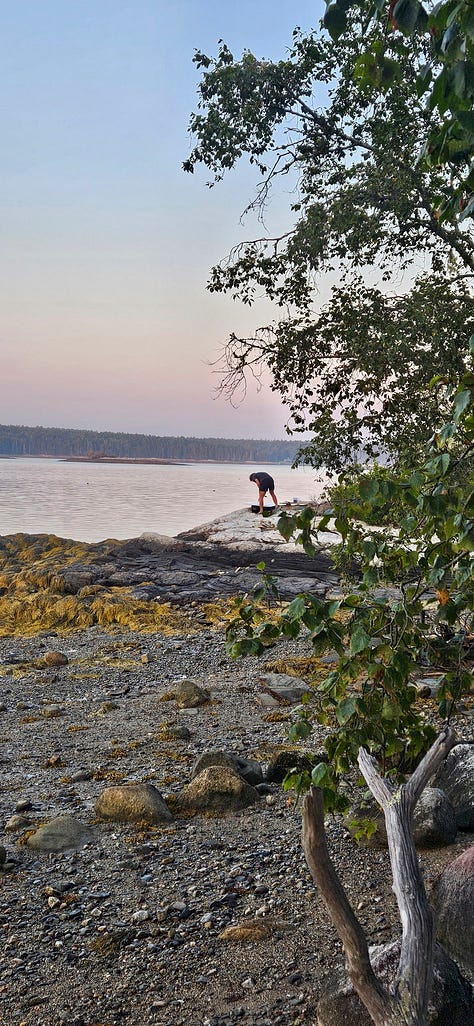

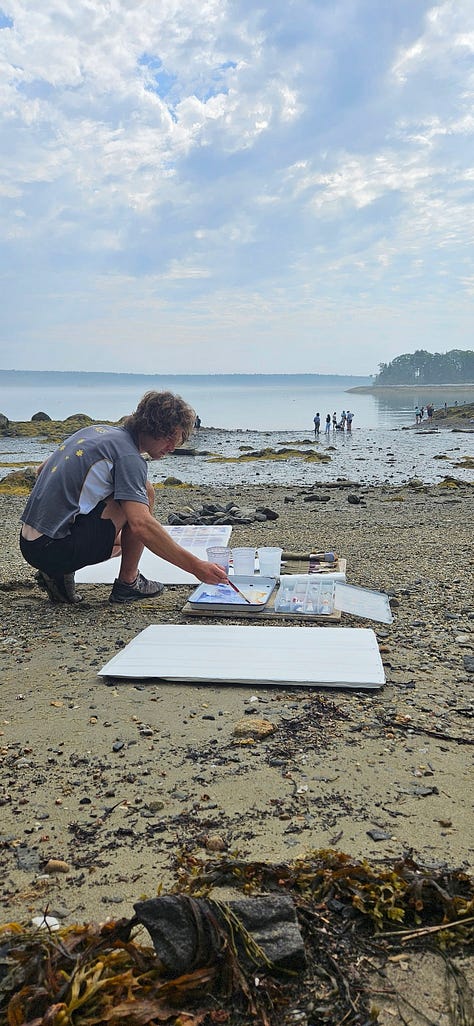

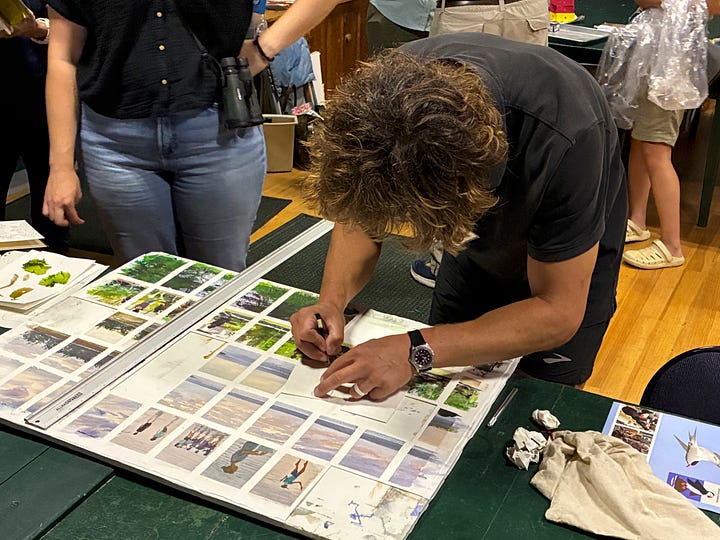
Without necessarily meaning or intending to, almost all the paintings I made were more than just single rectangles within sheets of paper - they are panels, multiples, times of day, changing light, the same or new places painted over and over and over, scenes kept intact as many hours, others cut up into their constituent pieces to be distributed to the other guests and staff of the island.
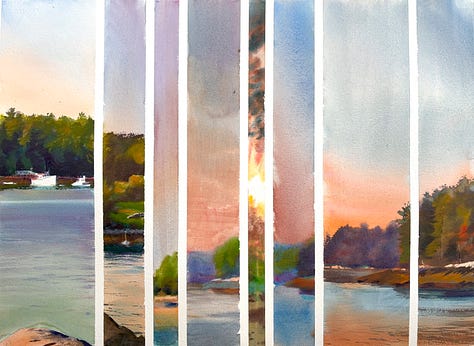
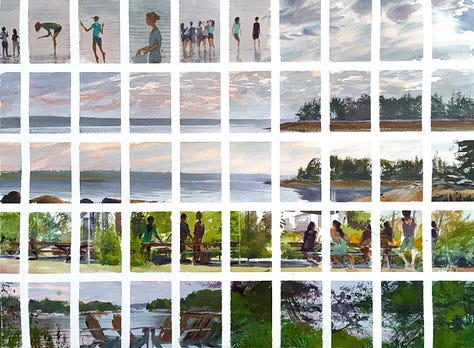
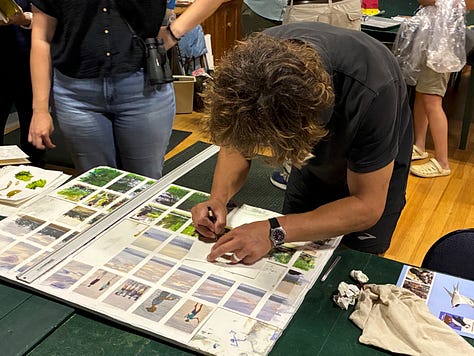
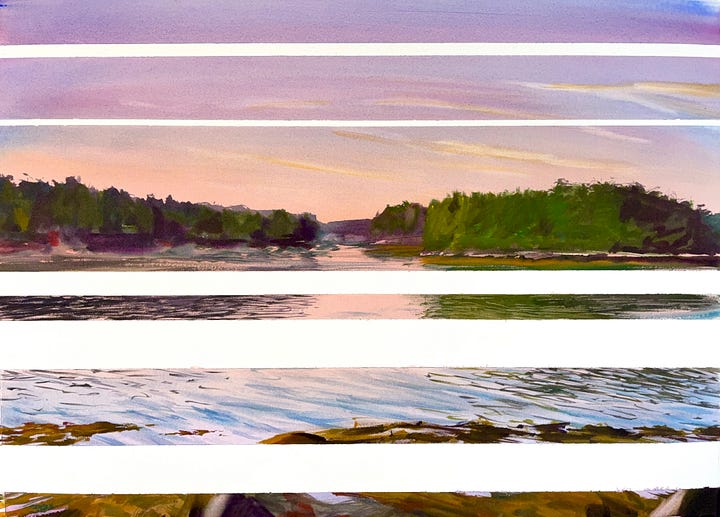
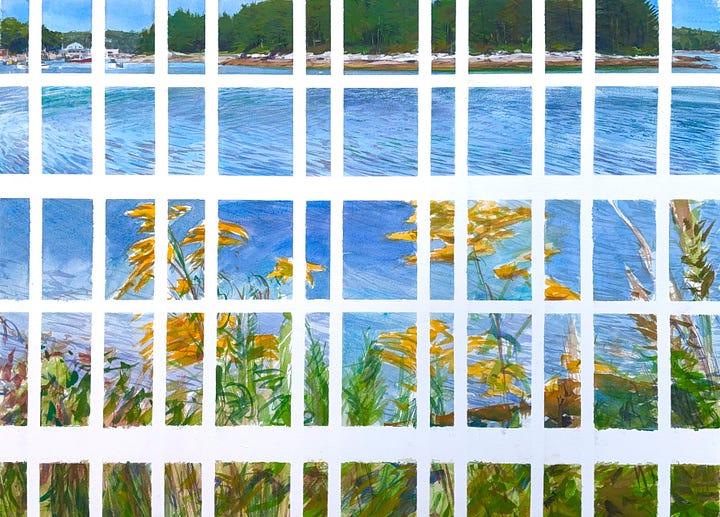
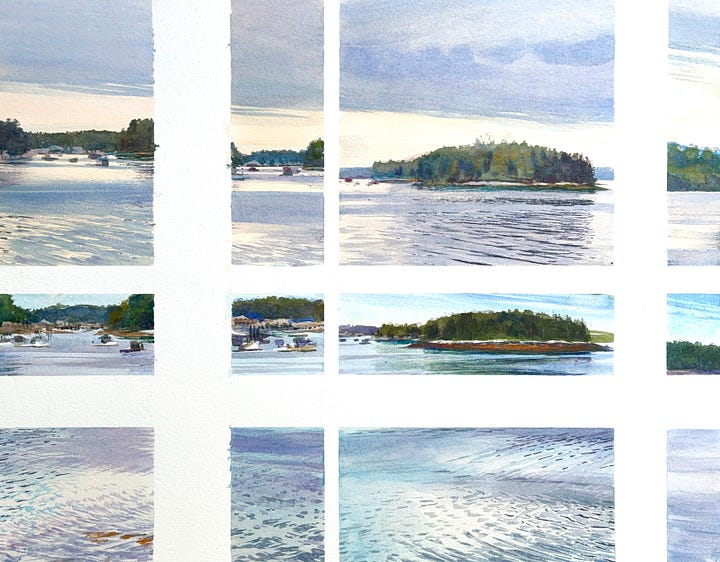

Thank you everyone who was there during my time on Hog Island. I made some brilliant new connections, many quiet memories, and took more than a few laps of the island itself, running from root to root on a path with occasional ferns up to my neck, bald eagles overhead, diesel engines from lobster boats the near-constant soundtrack.
Maine was so good to me I stayed on for a few days afterwards before driving reluctantly back to Seattle. In a rush to get home, my final day of driving was 1400 miles in a single go, 20 hours total, all to be able to spend a bit more time with the people most important to me here. In one week I’ll be back out again, this time to Japan, a trip that is a critical next step in the Lafcadio Project, my optical book of author Lafcadio Hearn’s “The Dream Of A Summer Day”, his re-telling of the Japanese folk tale of fisher-boy Urashima Tarō, originally published in 1894. Between now and then, I’ve got a commissioned project to finish - making work representing Portage Bay Café, a Seattle Institution, and the best damn brunch in town for more than 20 years and counting.
All Best,
-David Orrin Smith






